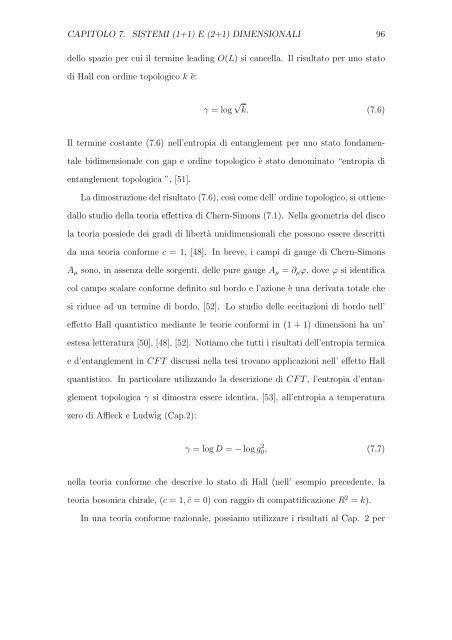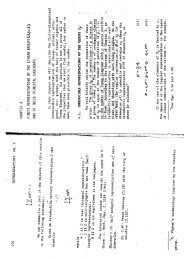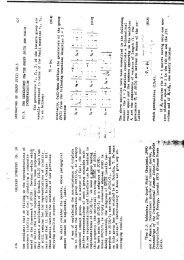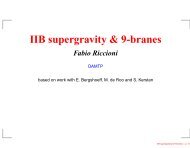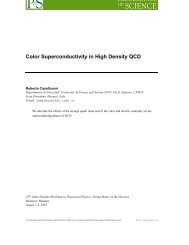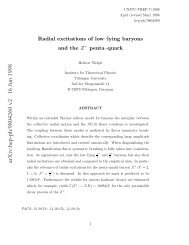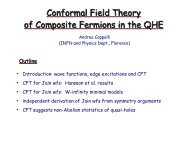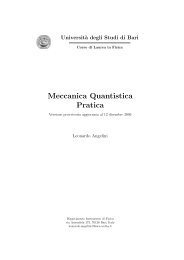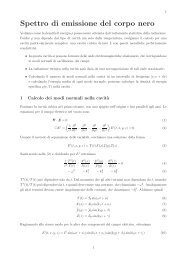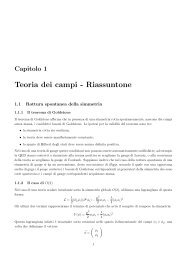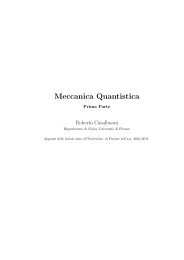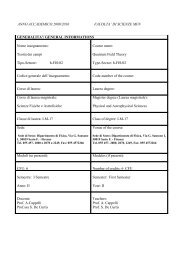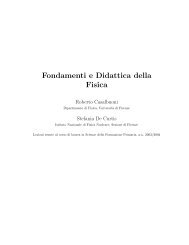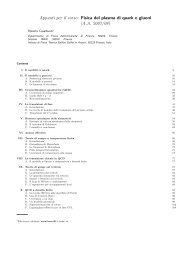entropia di entanglement in teorie invarianti conformi bidimensionali
entropia di entanglement in teorie invarianti conformi bidimensionali
entropia di entanglement in teorie invarianti conformi bidimensionali
Create successful ePaper yourself
Turn your PDF publications into a flip-book with our unique Google optimized e-Paper software.
CAPITOLO 7. SISTEMI (1+1) E (2+1) DIMENSIONALI 96<br />
dello spazio per cui il term<strong>in</strong>e lea<strong>di</strong>ng O(L) si cancella. Il risultato per uno stato<br />
<strong>di</strong> Hall con or<strong>di</strong>ne topologico k è:<br />
γ = log √ k. (7.6)<br />
Il term<strong>in</strong>e costante (7.6) nell’<strong>entropia</strong> <strong>di</strong> <strong>entanglement</strong> per uno stato fondamen-<br />
tale bi<strong>di</strong>mensionale con gap e or<strong>di</strong>ne topologico è stato denom<strong>in</strong>ato “<strong>entropia</strong> <strong>di</strong><br />
<strong>entanglement</strong> topologica ”, [51].<br />
La <strong>di</strong>mostrazione del risultato (7.6), così come dell’ or<strong>di</strong>ne topologico, si ottiene<br />
dallo stu<strong>di</strong>o della teoria effettiva <strong>di</strong> Chern-Simons (7.1). Nella geometria del <strong>di</strong>sco<br />
la teoria possiede dei gra<strong>di</strong> <strong>di</strong> libertà uni<strong>di</strong>mensionali che possono essere descritti<br />
da una teoria conforme c = 1, [48]. In breve, i campi <strong>di</strong> gauge <strong>di</strong> Chern-Simons<br />
Aµ sono, <strong>in</strong> assenza delle sorgenti, delle pure gauge Aµ = ∂µϕ, dove ϕ si identifica<br />
col campo scalare conforme def<strong>in</strong>ito sul bordo e l’azione è una derivata totale che<br />
si riduce ad un term<strong>in</strong>e <strong>di</strong> bordo, [52]. Lo stu<strong>di</strong>o delle eccitazioni <strong>di</strong> bordo nell’<br />
effetto Hall quantistico me<strong>di</strong>ante le <strong>teorie</strong> <strong>conformi</strong> <strong>in</strong> (1 + 1) <strong>di</strong>mensioni ha un’<br />
estesa letteratura [50], [48], [52]. Notiamo che tutti i risultati dell’<strong>entropia</strong> termica<br />
e d’<strong>entanglement</strong> <strong>in</strong> CF T <strong>di</strong>scussi nella tesi trovano applicazioni nell’ effetto Hall<br />
quantistico. In particolare utilizzando la descrizione <strong>di</strong> CF T , l’<strong>entropia</strong> d’entan-<br />
glement topologica γ si <strong>di</strong>mostra essere identica, [53], all’<strong>entropia</strong> a temperatura<br />
zero <strong>di</strong> Affleck e Ludwig (Cap.2):<br />
γ = log D = − log g 2 0, (7.7)<br />
nella teoria conforme che descrive lo stato <strong>di</strong> Hall (nell’ esempio precedente, la<br />
teoria bosonica chirale, (c = 1, ¯c = 0) con raggio <strong>di</strong> compattificazione R 2 = k).<br />
In una teoria conforme razionale, possiamo utilizzare i risultati al Cap. 2 per


